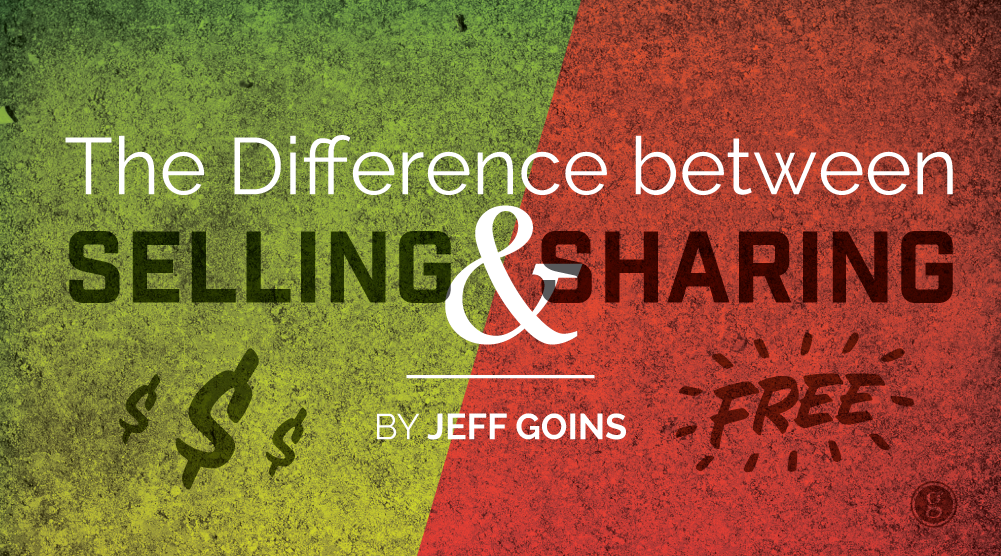
Ever wanted to get some one-on-one sales coaching by Steli? The team of AutoUncle did, and here's the full recording of the call, and a writeup for those who prefer to quickly get the gist of it:
You have some really great calls with prospects. They dig your product; they understand the benefits and sound super-interested in signing on the dotted line.
Yet, once you send over the follow-up and contracts, you hit a stumbling block. Everything slows down. They want to go away and discuss it with their team, and all the great discussion from your first call is lost.
Eventually, you have to get back on the phone and go over it all again. The sale takes three times as long as it should, or even worse, breaks down completely.
Plenty of businesses experience problems like this and recently Steli sat down with AutoUncle to help them tackle the problem of getting deals over the line.
AutoUncle’s vision is to make the used car market transparent and attract more buyers and sellers. They create transparency by gathering, and cleaning up, the jungle of adverts as well as evaluating the market price of every car for sale.
They have a ton of value to add to car dealerships and have helped hundreds of businesses. So why aren’t their prospects converting? What can they do in their phone conversations to get prospects over the line?
1. The prospect needs emotional buy-in
AutoUncle has some stellar case studies. When speaking to prospects, they can show off a range of clients who have all achieved great things with their platform.
Their product makes sense to prospects, and they understand how it can help their business. But sales isn’t a rational business. People need to be emotionally invested to make a purchase decision, and they need to trust you. It's your job to establish trust.
AutoUncle needs to reinforce an emotional buy-in, not features sets or ROI discussions. It comes from telling stories your prospect can relate to.
Here’s how they could do it:
Sales rep: “Remember when people started selling cars online. Quite a few people were skeptical and didn’t get involved right away, instead sticking to what they knew: traditional methods like magazine and newspaper ads.
Looking back, do you think jumping on the Internet early would’ve benefited your business?
This is the same type of opportunity. I’d rather you were one of the first customers so that you get all the benefits: the most reviews, the best positioning, etc. You’ll benefit from our growth.”
This type of story plays to a number of the emotions that drive sales; pride (being first and looking smart in front of their peers), fear (of missing out on a great opportunity), etc.
2. Be authoritative
Once you’ve established that your product or service will be beneficial to your prospect, it’s no longer a case of asking them to buy, it’s time to tell them to buy. Be respectful, but authoritative. Let your experience shine through. For example:
Sales rep: “I’ve done this hundreds of times and here’s what tends to happen. You want to do this deal, but you have other things to do: a business to run, cars to sell, and a family life to maintain. Obstacles will always pop up in the way.
In a couple of weeks, I’ll follow up. Then I’ll follow up again and again until, three months down the line, we close a deal that we could’ve closed in the next hour. During those 3-4 months, we could’ve gotten your cars in front of an extra 15,000 potential customers.”
In this situation, you want to help your prospect move faster. It’s not just about you getting the deal closed, but even more about having this company reap the benefits of your partnership as soon as possible.
3. Tell relevant stories
When you’re showcasing your current customers and the results you’ve created for them, ensure your chosen stories are as relevant as possible to your prospect.
Using big logos and recognized brand names can be impressive. But benefits don’t always translate to a prospect if it's not a truly relevant case study.
For example, a prospect from a small, local car dealership will have completely different problems from one at a large, national dealership.
You’ll need to experiment and see what works best. Sometimes quoting a large company will really grab the interest of your prospect. Other times saying, “two companies in your area already see amazing results,” will be more effective.
When we launched our sales as a service startup, one of the crucial elements of our sales script was to tell people that we're calling startups in the area. Why? Because it is an immediate indicator of relevancy! I've shared the story in a past Pioneers talk.
Sales rep: “The biggest car dealership in the country is using our product and they drive thousands of new leads per day. Also, two local garages in your area have been on our platform for three months and have seen a 20% rise in sales leads.”
4. Onboard the prospect during the call
Once your prospect has shown an interest, get the ball rolling and start the onboarding process.
Whether that means walking them through the website sign-up or sending over a contract, try to do it while they’re on the line.
Sending over a contract or link after a call means your prospect has to take more time out of their day to go back through and re-read everything.
This is a less-than-appealing task for most people. And it will definitely fall to the bottom of any to-do lists.
Before a call, set up an email template using a tool like Close.io, so that everything is ready. Then, when you have a prospect on the line, send the contract (or whatever material you need to onboard them) and go over the contract together with them. Tell them: "Hey, I've just emailed you the contract. Let's open that email and quickly go over the contract together right now."
This way, you’ll be able to influence their experience, manage objections on the spot, clear up any questions that come up while they’re reading the contract and avoid having details derail your deal.
After reviewing the contract, reinforce your key metrics and how your product will help. Where possible, show the prospect how they will see ROI right away:
Sales rep: “Our average customer of your size makes three extra sales per month using our platform. It only takes one sale to break even and 90% of our customers see a profit in month one.”
Get the prospect to sign the contract while you’re still on the phone. Make it happen right now!
Experiment and learn
Make these four sales techniques part of your repertoire and practice working them into your conversations each day.
Perfecting your sales calls won’t happen overnight. You’ll need to experiment and see what works with different prospects.
Once you’ve figured out what works for you, you’ll move prospects through the buying stages faster and close more deals.
Want to pick Steli's brain on a specific sales challenge? Click here to apply for a free 15-minute sales coaching session!





 I get my hair cut by the same person every time, no matter what. It’s not a hard cut: I go with a buzz, four up top and three on the side. Anyone can do it, really. But I go to the same person every time.
I get my hair cut by the same person every time, no matter what. It’s not a hard cut: I go with a buzz, four up top and three on the side. Anyone can do it, really. But I go to the same person every time.













 You know those little smiley faces you send to your pals in a text, the ones that come in the form of cats and high-fives? If you didn’t already know, those bad boys are called emojis. Whether you think they’re ridiculous or a great way to add flair to your chat, they’re taking over the way that people text and communicate online. Because of this, it’s time for marketers to take heed and amp up their emoji literacy because this is more than a trend – it’s a form of expression, and marketers can capitalize.
You know those little smiley faces you send to your pals in a text, the ones that come in the form of cats and high-fives? If you didn’t already know, those bad boys are called emojis. Whether you think they’re ridiculous or a great way to add flair to your chat, they’re taking over the way that people text and communicate online. Because of this, it’s time for marketers to take heed and amp up their emoji literacy because this is more than a trend – it’s a form of expression, and marketers can capitalize.



 Follow Us
Follow Us Like Us
Like Us













 Better, deeper, insightful, and well-rounded understanding of customers and buyers is on the top of the list for many CEOs and CMOs today.
Better, deeper, insightful, and well-rounded understanding of customers and buyers is on the top of the list for many CEOs and CMOs today.


 A couple of weeks ago I had lunch with an old friend – we hadn’t seen each other for nearly 12 years. We worked together at IBM and took the CIM Post Graduate Marketing Diploma together and that’s where we had a little giggle.
A couple of weeks ago I had lunch with an old friend – we hadn’t seen each other for nearly 12 years. We worked together at IBM and took the CIM Post Graduate Marketing Diploma together and that’s where we had a little giggle. Today, a good product needs to come as standard. The digital age is hugely transparent. If your product is poor you’ll get found out. Online consumer reviews now dictate the how successful your product will be received.TripAdvisor, Check-a-trade or Trust Pilot – they’re all there to do one thing. Provide transparent insight into the quality of products that consumers have bought for the benefit of future consumers.
Today, a good product needs to come as standard. The digital age is hugely transparent. If your product is poor you’ll get found out. Online consumer reviews now dictate the how successful your product will be received.TripAdvisor, Check-a-trade or Trust Pilot – they’re all there to do one thing. Provide transparent insight into the quality of products that consumers have bought for the benefit of future consumers. These days it’s pretty difficult to differentiate your product on price unless you’re a premium brand and invest heavily in your marketing. Price transparency challenges companies to be competitive. Data is available everywhere – on computers, on mobile devices and on tablets. As consumers browse shelves they can check online prices real-time and switch within seconds.Last week
These days it’s pretty difficult to differentiate your product on price unless you’re a premium brand and invest heavily in your marketing. Price transparency challenges companies to be competitive. Data is available everywhere – on computers, on mobile devices and on tablets. As consumers browse shelves they can check online prices real-time and switch within seconds.Last week  If availability were ever a differentiator, it probably needs reviewing. Amazon now offer their
If availability were ever a differentiator, it probably needs reviewing. Amazon now offer their  It’s a fact.
It’s a fact.  Everything today is about the customer experience. Every brand touch point including the website, the chat window, the telephone conversation, the branded vehicle on the road…EVERYTHING contributes to brand perception. Smart companies are trying to map the digital journey as much as possible. Pre-empting where the customer will be at a certain point of their journey with content that will be relevant to them. However, digital platforms are very noisy. We’re bombarded with
Everything today is about the customer experience. Every brand touch point including the website, the chat window, the telephone conversation, the branded vehicle on the road…EVERYTHING contributes to brand perception. Smart companies are trying to map the digital journey as much as possible. Pre-empting where the customer will be at a certain point of their journey with content that will be relevant to them. However, digital platforms are very noisy. We’re bombarded with  Nurturing a community is probably the best long-term customer experience investment a company can make. It won’t happen overnight. It’s a long process. But it’s one of those competitive advantages that cannot easily be replicated. SAP is a brilliant example. A
Nurturing a community is probably the best long-term customer experience investment a company can make. It won’t happen overnight. It’s a long process. But it’s one of those competitive advantages that cannot easily be replicated. SAP is a brilliant example. A  To get the best out of your workforce and your relationship with customers, collaboration is key. Too often, internal collaboration tools like
To get the best out of your workforce and your relationship with customers, collaboration is key. Too often, internal collaboration tools like  Where do I start? Well, first Communication isn’t a department, it’s the fabric of a business. It’s everyone’s responsibility.Why? Because digital has changed everything. Leaders who bury their heads in the sand spouting “I’m too old for social media” will soon have a shock when they suddenly find a
Where do I start? Well, first Communication isn’t a department, it’s the fabric of a business. It’s everyone’s responsibility.Why? Because digital has changed everything. Leaders who bury their heads in the sand spouting “I’m too old for social media” will soon have a shock when they suddenly find a 


 Thanks to
Thanks to 

